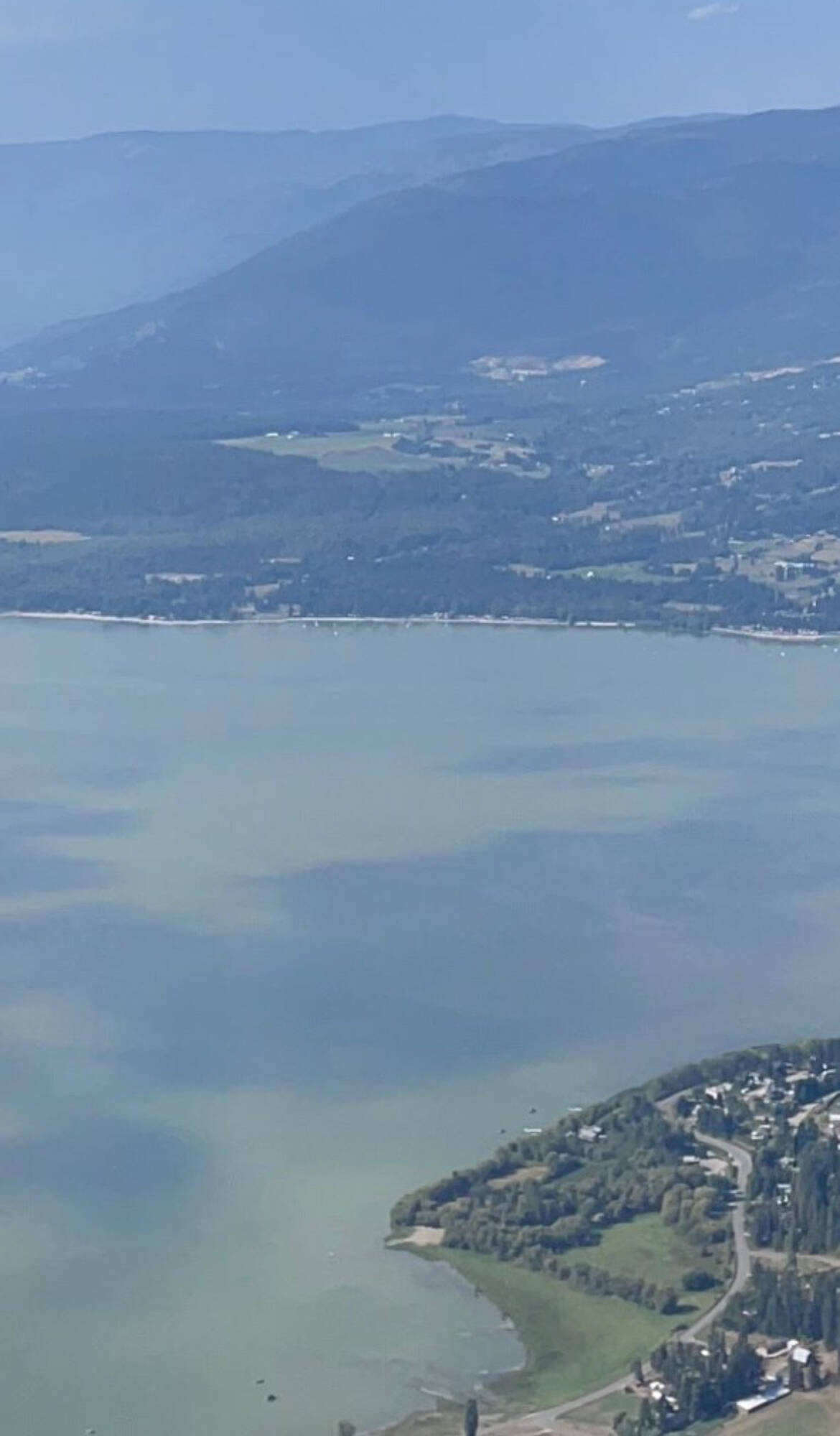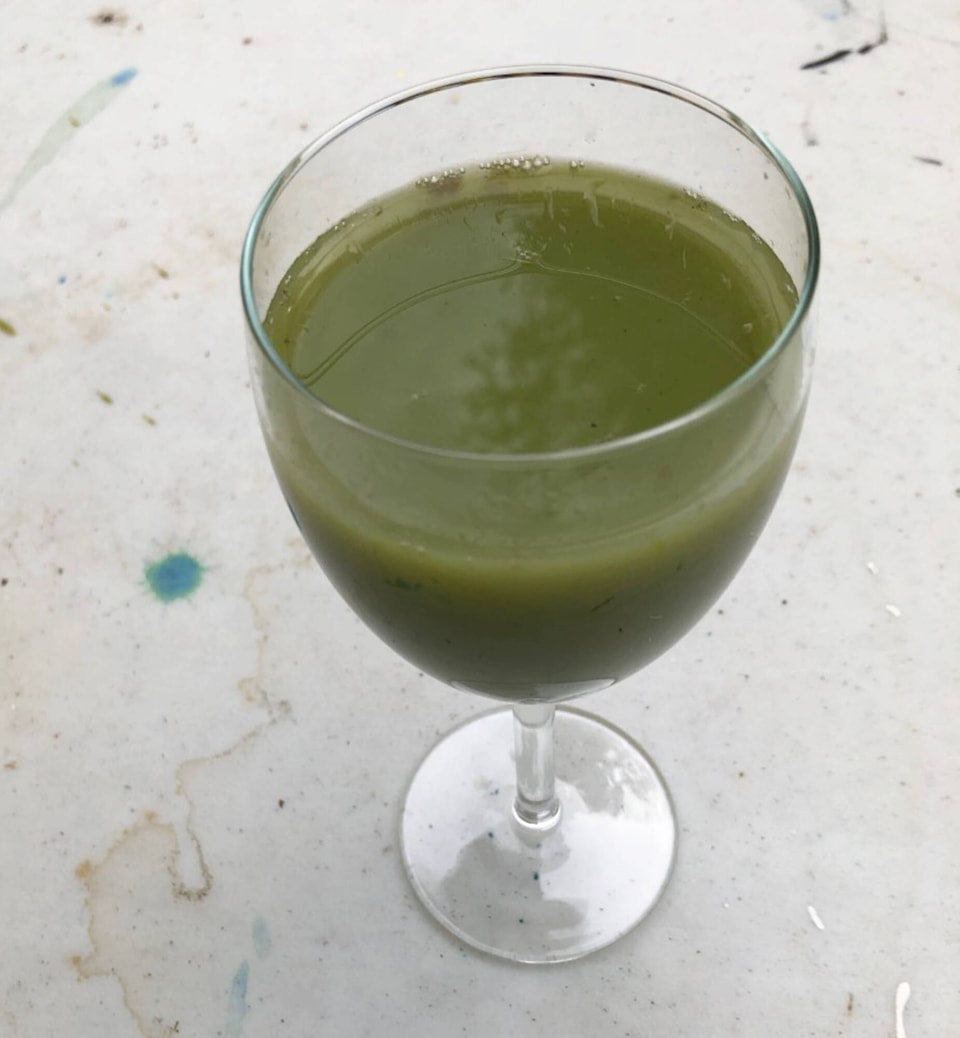It’s time for the provincial government to step in to prevent more algal blooms in Shuswap Lake.
Shuswap Watershed Council made that point recently, writing to George Heyman, Minister of Environment & Climate Change Strategy, to ask for an investigation into why the lake has seen two large blooms in three years.
Along with impacting residents’ and visitors’ enjoyment of the lake, the letter pointed out the species of algae in the 2020 and 2022 blooms has the potential to produce cyanotoxins, which can be toxic to people and animals.
The watershed council noted in its letter to the ministry that a few factors contribute to an algal bloom, including sunlight, calm water and a supply of nutrients. Phosphorus, in particular, is well known to be a determining factor in harmful algal blooms.
SWC already commissioned a research project led by UBC Okanagan that found the highest proportion of phosphorus in Shuswap Lake is coming from agricultural lands via the Salmon River. Also, phosphorus-loading into Shuswap and Mara lakes has steadily increased since the 1980s.
Erin Vieira, program manager with Shuswap Watershed Council (SWC), said in an interview that a ministry investigation could mean a much more robust monitoring program, determining if the cause is land based, if there are hot spots and other details.
The information could result in compliance and enforcement, she said.
“I’m hoping we can do this better – that we can have a thriving agriculture sector and we can have a clean lake.”
Read more: Homeowners, industry encouraged to take action to protect water quality in the Shuswap
Vieira said a complicating factor is what’s called ‘legacy phosphorus,’ phosphorus that has built up over decades and can be released decades later.
The SWC pointed out it is invested in education and incentives to help protect Shuswap Lake water quality, such as a grant program to provide financial assistance to farms for improving nutrient management. It also just published a Phosphorus Action Plan for the Shuswap watershed, providing actions everyone can take to minimize their ‘phosphorous footprint.’
The letter said SWC appreciates the work ministry staff are doing on water quality objectives and on a water quality report on the Salmon River. It also referred to the ministry’s agricultural environmental code of practice it released a few years ago.
It concluded: “We are now asking your ministry to act quickly to investigate and correct the water quality problems in the Salmon River and Salmon Arm of Shuswap Lake, and restore Shuswap Lake to a healthy state.”
Read more: Good news: Algae tests in two areas of Shuswap Lake don’t contain toxin
In an email thread with the Observer in September and October, the ministry addressed why blooms are happening now.
“Unfortunately, climate change means more extreme weather, some of which create good conditions for algal blooms. The wet weather and high lake levels in wet years washes more nutrients into the lake making them available for algae. The hotter weather encourages the algae to grow quickly and it results in a bloom. When the weather stays hot as it did this summer, the bloom lasts a long time.”
The ministry added the Salmon Arm end of the lake is also seeing a slight worsening of water quality.
Asked what can and is being done to prevent a recurrence, the ministry referred first to the actions SWC has been taking. It then stated that under the ministry’s code of practice, “the Salmon River watershed and the land base around Shuswap Lake is recognized as a phosphorus sensitive area and agriculture owners must carry out site-specific plans as of July of 2024 to prevent nutrients from reaching creeks, rivers, and lakes. ENV is also finalizing Water Quality Objectives for Shuswap Lake that provide guidance on phosphorus concentrations to ensure that Shuswap Lake conditions do not degrade.”
Questioned about the delay until 2024, the ministry said “the nutrient management plan is developed for the spring of the following year (2024 for the Shuswap Lake area) based on soil testing for nutrients in the fall of that year (2023). The nutrient management plan must be done by someone who has completed the training course and for some, this may require hiring someone who is qualified.”
It said the code of practice was developed in 2019 to address the types of issues along the Salmon River but other types of agriculture as well. Different aspects were phased in at different times to give people time to meet the requirements and implementation dates.
Read more: Algae bloom in Shuswap Lake deemed large but low risk
Read more: ‘Emerging algal bloom’ reported on Shuswap Lake
martha.wickett@saobserver.net
Like us on Facebook and follow us on Twitter and subscribe to our daily newsletter.

